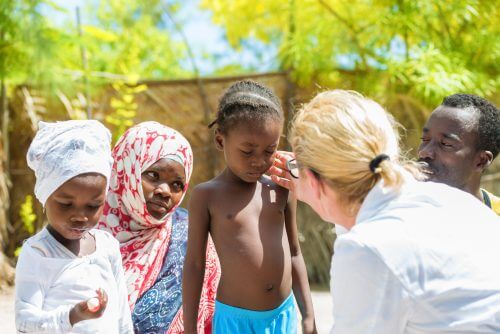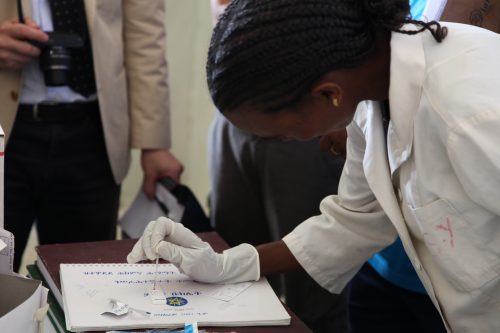In August 2018, the government of Burkina Faso - a tiny country in Africa - made a fateful decision. She announced that she would allow the release of genetically modified mosquitoes in her territory, in an attempt to eradicate malaria. Along the way, the government of Burkina Faso can also teach us an important lesson for the future of humanity

In August 2018, the government of Burkina Faso - a tiny country in Africa - made a fateful decision. She announced that she would allow the release of genetically modified mosquitoes in her territory, in an attempt to eradicate malaria. Along the way, the government of Burkina Faso can also teach us an important lesson for the future of humanity.
Malaria is one of the most damaging diseases in Africa and Asia. The parasites that cause the disease are carried in the intestines and salivary glands of Anopheles mosquitoes. When the female mosquito sucks blood from her human victims, she infects them with parasites. These multiply in the human body - then are sucked out by another Anopheles mosquito, which passes them on to new human victims, and so the cycle continues and the process repeats itself over and over again. Along the way, the humans who carry the parasites develop a high fever, and usually also suffer from exhaustion, vomiting and headaches. If you feel bad for them, you should know that the mosquitoes don't feel very good about it either, andThey also fall prey to the parasites they carry.
According to the World Health Organization report, in 2016 alone, 216 million people were infected with malaria, andAlmost half a million died as a result of the disease. The rest 'only' suffered long days in which they lay in bed and could not work. No wonder economists believe that malaria costs Africa as a whole 12 billion dollars a year - A huge amount for the poor countries on the continent.
How do you fight the disease? Until today, the main way of fighting was through prevention: people used nets that prevented the mosquitoes from reaching them at night. But nets tend to wear out and tear, and cannot protect those who have to work at night. And so malaria continued to reign throughout Africa and Asia.
In recent years, scientists and biotechnologists have begun to develop a new way to fight malaria. British scientists have succeeded in genetically engineering female mosquitoes in order to sterilize them - to prevent them from giving birth New mosquitoes for the world. These females, if released into the wild, will attract the attention and sperm of the males, who will try in vain towards the barren females. as a result, The number of mosquitoes in nature should decrease dramatically.

In fact, it is not just a theory, since such genetically engineered mosquitoes have been distributed in the last two years in the Cayman Islands, Panama, Brazil, the United States and India. The success was impressive: within six months there was a decrease of approximately eighty percent in the number of mosquitoes. In Brazil alone, where the scientists focused on the mosquitoes that spread the deadly dengue fever, there was a 91 percent decrease in the number of cases of infection with the disease that year.
Now African countries are also starting to adopt the genetically modified mosquitoes, led by the tiny but bold Burkina Faso. She is not alone in the campaign: Mali and Uganda will soon join her. In the first phase, the scientists intend to release 10,000 sterile genetically engineered mosquitoes, which will reduce the number of mosquitoes living in the wild. In the second stage, mosquitoes will be released that have been engineered with more advanced features: for example, mosquitoes that are unable to infect humans with the malaria parasites, of the type already developed at the University of California. In this way, it will be possible to eradicate malaria without undermining the food web - because the elimination of all mosquitoes may also harm the insects and birds that feed on the small bloodsuckers.

A village meeting in Burkina Faso, where the villagers receive an explanation about the genetically modified mosquitoes that will be released in the village. source: Target Malaria.
The most exciting part of these developments is also the scariest: by re-engineering the mosquitoes, we are able to change the characteristics of the entire population over time. In other words, through a one-time intervention - an operation that will take a few years - we can change the face of Africa and Asia for the next few centuries. In this respect, it is a technology that completely changes the picture. Every other technology we've invented so far has required constant maintenance: power plants will stop working almost immediately without human workers, for example. But the genetic engineering of the mosquitoes, if done carefully and rigorously, could be preserved over many human generations.
Of course, the danger of technology cannot be ignored either. There is almost no chance that genetically engineered mosquitoes will harm humans, but we may inadvertently kill the entire population of mosquitoes of a certain species, thus seriously damaging the food web and all other animals that feed on the mosquitoes. Even worse, the technology can also be used as a weapon, and one can imagine a future war in which genetically engineered mosquitoes are released that can inject deadly toxins into the humans in the area - and even reproduce with the existing mosquitoes in the area and pass on the same harmful genes to their offspring. This is the power we, as humans, are beginning to acquire today: to play with life and death and to reshape the organisms on Earth for our purposes, for better or for worse.
But at least for now, we can use technology for good. Through the engineering of mosquitoes and other insects we can get rid of deadly diseases that have accompanied humanity for hundreds of thousands of years: malaria, dengue fever, Lyme disease, and others. These diseases kill more than half a million people a year, and harm the ability of families and countries to finance themselves. This gift of health will be a gift we will give to future generations - to our children, grandchildren and all our future descendants.
More of the topic in Hayadan:

5 תגובות
Burkina Faso is neither "tiny" nor "tiny" - its area is more than 10 times that of Israel, and slightly larger than that of Uganda, which for some reason does not receive any title in the article.
It is not clear what these far-fetched titles contribute...
Pretty
I tried to look for some mosquito species that don't need blood to produce eggs, and I couldn't find any. But out of several thousand species, it is likely that several tens or hundreds of species are such. It is possible that in the future it will be possible to eliminate all blood-sucking species and leave species that are satisfied with flower nectar. In this way we can help hundreds of species of animals that suffer badly from mosquitoes. Gradual action will allow the nectar eaters to fill the place of the bloodsuckers.
There are about 5000 species of mosquitoes, and less than 100 of them transmit diseases. So the elimination of a few dozen species will not cause a big change - there are enough species that will fill the ecological void that will be created in a short time.
And besides - mosquitoes have transmitted diseases that have killed more than half of the people who have ever lived, according to estimates. Here it is literally a life and death war. Better to win.
Gunning genetically engineered mosquitoes doesn't scare me.
For two reasons.
One, it is not very efficient.
Second, it requires great resources and effort and it will be easier to use weapons with much greater damage.
The real fear should be from possible forms of attack by terrorists. And there is no chance that a terrorist organization will succeed in developing genetic engineering and there is no chance that a country will use such a weapon that could harm it again. After all, mosquitoes will not recognize a border line between countries.
Countries already have atomic bombs.
The challenge today in terms of military development is not to create a weapon that causes extensive and unrestrained damage. This is no longer great wisdom.
The challenge is a targeted weapon with minimal environmental damage.